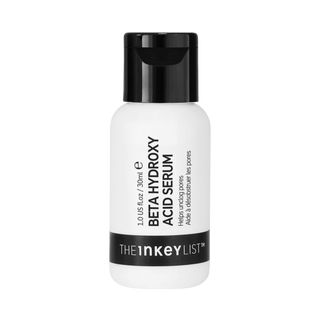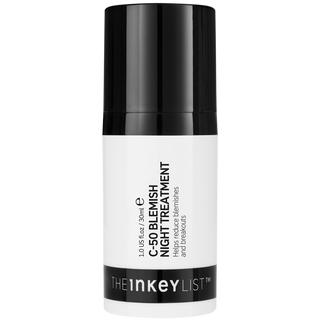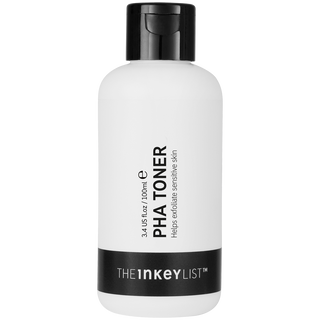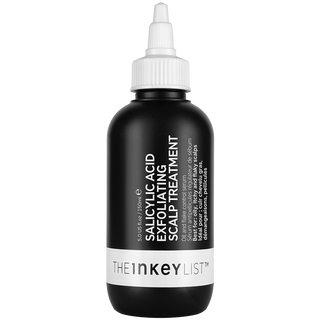Chemical Exfoliants 101

If the thought of putting acid on your face still triggers flashbacks to school science lessons, it might be time to delve deeper into the world of chemical exfoliants and the benefits they have on the skin - no bunsen burners or test tubes in sight.
When it comes to exfoliation, we may be more familiar with scrubs and microbeads which can be damaging to the skin as well as the environment (microbeads are generally tiny bits of plastic!). These exfoliators physically remove dead skin cells from the surface and the abrasive action can actually cause damage to the skin structure. An alternative is chemical exfoliants which are core active ingredients that work to the same effect by loosening bonds on the upper layers of the skin to remove them.
Why do we need to exfoliate?
There are multiple benefits of exfoliation. Firstly, removing the upper layers of dead skin can help speed up the process of regeneration which slows down due to age or is impacted by environmental stressors. This can help even the skin tone and texture and reduce fine lines and wrinkles. Exfoliation can also be a preventative measure for acne and breakouts by removing dirt, debris and excess sebum that can plug and block the pores.
How to exfoliate using chemical exfoliants
AHAs, PHAs and BHAs
Alpha Hydroxy Acids, Poly Hydroxy Acids and Beta Hydroxy Acids are the three main groupings of chemical exfoliators you will encounter on your chemical exfoliants journey. These are identified by their molecular structure which defines how deeply they penetrate the skin’s layers and therefore what concerns they target best.
BHAs // BETA HYDROXY ACIDS
BHAs are oil soluble and have smaller molecules which allow them deeper beneath the skin and into the pores to remove acne-triggering dirt and sebum which build up and break out. BHAs are great for oily and combination skin which may have more build up of oils.
Beta Hydroxy Acid in its original form is designed to remove dead and dehydrated cells from the surface of the skin which can clog pores contributing to blackheads, breakouts and milia. Oil soluble, this is a great choice for oily and combination skin and can work well for more sensitive skin.
HOW TO USE: Use AM or PM. After cleansing and/or toning apply 1 to 2 drops to the face and neck. Use 2-3 times per week and build up frequency.
Containing hero BHA exfoliator, Salicylic Acid, this overnight mask works hard to treat blemishes and prevent future breakouts. It helps to fight off blemish causing bacteria and minimises skin’s excess oil production. On top of this, it has anti inflammatory and anti redness properties, whilst being beneficial for evening skin tone.
HOW TO USE: Use in the PM as your last step before sleep. Follow your usual skincare recipe, but replace your moisturiser step with this night treatment to help reduce and prevent breakouts. Apply a thin layer to the face and neck. It can also be used on other blemish-prone areas, including your back and chest. Once absorbed, leave to work overnight and wash off the next morning.
Find out more about how to treat back and chest acne here.
AHAs // ALPHA HYDROXY ACIDS
AHAs are water soluble and work more on the skin’s surface to lift away dead skin cells. Their main purpose is targeting concerns of tone and texture but can also target signs of ageing, hyperpigmentation or sun damage.
This next-generation peel is built for multi-level exfoliation and formulated to be hardworking but non-irritating. Antioxidant rich apple cider vinegar helps brighten and reduce redness, while minimizing the appearance of pores, post-blemish marks and reducing breakouts. Glycolic and fruit acids combine to smooth and refine skin texture for overall smoother, brighter skin.
HOW TO USE: To be used as a peel in the PM once per week, can be increased to twice per week if your skin can tolerate it, but be careful not to over exfoliate. Apply a thin layer to dampened cleansed skin and leave to work for 10 minutes before rinsing off using warm water. Pat face dry and follow with preferred serums and moisturiser. Can also be used on other breakout prone areas such as the chest and neck.
PHAs // POLYHYDROXY ACIDS
Polyhydroxy Acids are like an AHA but with a bigger molecular structure that can’t penetrate the skin’s surface. They are beneficial for sensitive skin as they are exfoliating but have less risk of irritation.
A gentle exfoliant for sensitive skin that helps remove dead skin cells from the surface, giving the appearance of smoother, brighter skin, whilst its humectant properties naturally lock in moisture. Formulated with Aloe Barbadensis Leaf juice helps soothe the skin and 3% Niacinamide to even skin tone, this toner is great for both AM and PM use.
HOW TO USE: Use in the AM and PM. Saturate a cotton pad with the formula and on cleansed skin wipe the face and neck. Follow with preferred serums and moisturiser. Do not rinse off.
Chemical exfoliants are not just for your face. Their power properties can improve your hair as well by removing the dead skin cells that cause an itchy or flaky scalp...
SALICYLIC ACID EXFOLIATING SCALP TREATMENT
Exfoliating the scalp is vital to remove dead skin and product build up and give the roots the chance to thrive and lift versus being weighed down. It's a common mistake to think that a flaky and itchy scalp is caused by a dry scalp. Often, a dry flaky scalp is caused by overproduction of oil by the sebaceous gland located near the hair follicles.
To tackle itchiness, flakiness and excessive oil build up, this lightweight serum which utilises hero BHA Salicylic Acid to remove flakes through gentle exfoliation, similar to its role in skincare.
HOW TO USE: Use as pre-shampoo treatment. Shake into the palm of your hand, massage hands together and use your fingertips to rub into your scalp. Apply enough to cover the entire scalp. Leave on for 10 minutes then wash hair as normal. Use 1-2 times a week AM and PM.
SAFE EXFOLIATION
Chemical exfoliants are powerful but can be intense to introduce to your routine and there are few guidelines you can follow to avoid reaction.
- We recommend building up the use of chemical exfoliants in your routine gradually increasing the frequency slowly to allow your skin to adjust. Start with 2-3 times per week and build up based on your skin’s reaction.
- Exfoliants such as PHA Toner can be used twice daily whereas stronger chemical exfoliants such as Retinol Serum and BHA we recommend only using in the PM and building up to daily.
- Overuse of exfoliating acids can damage the stratum corneum – the outermost layer of your skin also known as the skin barrier which keeps hydration and moisture in and protects from environmental aggressors - be patient with your new products and listen to your skin.
- As chemical exfoliants penetrate the layers of the skin, they can sometimes cause dryness and sensitivity to UV rays. Make sure you have a moisturiser and SPF in your routine to help prevent damage.
- When introducing exfoliants into your routine we always do a patch test behind your ear 24 hours before use and monitor the skin’s reaction. Follow the instructions on the individual product.
CHEMICAL EXFOLIANTS AND HOW TO LAYER
We always get asked about layering when using multiple chemical exfoliants. There’s no right or wrong as it can depend on your skin’s tolerance but, as a rule of thumb, we advise to generally avoid layering exfoliating acids with a) themselves and b) other strong actives such as Retinol and Vitamin C.
If you do wish to layer, we advise to patch test and build up frequency of use slowly to gauge your skin’s reaction. PHAs, as they are gentler, should be ok to layer with AHAs and BHAs.
If you start to experience instant redness, burning, flakiness, dryness or rash-like breakouts it could be a case you’re reacting or over exfoliating. Reduce your usage or check your routine for acid clashes. You can alternate days or use one in the AM and one in the PM if you wish to build multiple chemical exfoliants into your routine.
Learn more on How to Layer Skincare here.
Further questions on chemical exfoliants? Get in touch with the askINKEY team.











